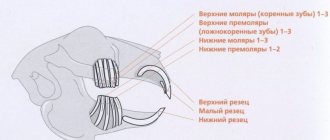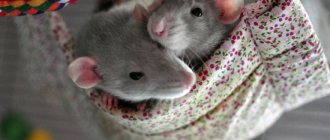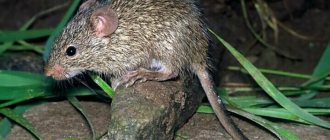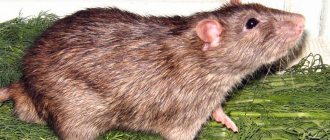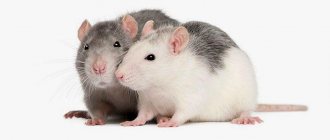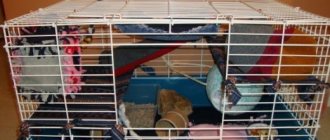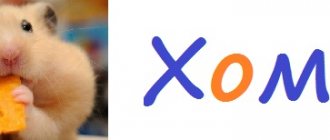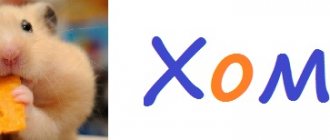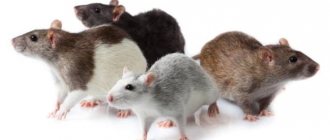For a long time, rats were a sign of unsanitary conditions and frightened humanity, becoming a harbinger of illness or hunger.
They were considered pests until charming ornamental animals appeared, which in intelligence and sociability can compete with the usual cats and dogs. When planning to get a rodent, it is important to understand the difference between rats, mice, and hamsters in order to provide the animal with the most proper care and living conditions.
General characteristics of the animal
Depending on the species, the length of a rat’s body can range from 8 to 30 cm. A distinctive feature is a long tail, sometimes exceeding the length of the body. The weight of the animal ranges from 37-400 g. Particularly large individuals of gray rats can reach a weight of 0.5 kg.
Classic shades of wool are gray and brown, although yellow and orange colors are also found. The main types of wild rats are gray and black, widespread everywhere. The rest of the rodents live in a strictly defined area.
The following breeds are best suited for home keeping:
- standard - large animals with a long tail and smooth fur;
- satin - the animals are covered with a thin six, curling blue;
- Dumbo - funny animals with a wide head, pear-shaped body and large round ears;
- Sphynx - hairless rats with pink shiny fur;
- tailless - a distinctive feature is the complete absence of a tail.
Population and species status
Since the beginning of the third millennium, black rat populations have declined markedly and become fragmented. According to experts, black rats have begun to be replaced by more fertile gray rats (pasyuki). And yet, despite the high fertility, rat populations do not go beyond the “Red Line”, since their numbers are controlled by a number of important factors.
Firstly, the number of these animals directly depends on the availability of food and shelter. Lack of food immediately leads to a decline in population. In addition, there are special rat control services. The number of these animals is constantly declining as a result of certain diseases, as well as hunting by many predators. Therefore, despite their high fertility, which leads to constant surges in their numbers, natural factors, as well as rat control services, are doing their job.
Today, most species of rats are not even close to the risk zone, although there are very rare species that are protected. As a rule, the number of rare species largely depends on the life activity of people, who are developing more and more new territories that are related to the natural habitat of these species.
Franklin Island is home to a very rare species of “House Rats.” Due to the fact that the species lives in a limited area, it is classified as an endangered species. Currently, only about 2 thousand individuals live in this territory. Annual deforestation and fires can reduce kangaroo rat populations.
Rat face
The muzzle area includes:
- nose;
- eye sockets;
- mouth;
- cheeks;
- chewing area.
The oral slit is located on the anterior and lateral edges of the muzzle. The nostrils are placed at the top of the nose close to each other. A vertical groove begins just below the nose, allowing the upper incisors to be exposed even if the rodent keeps its mouth closed.
There are vibrissae near the tip of the nose. Organs of touch that help the animal navigate and evaluate objects along the way. The eyes are set deep and protected by movable eyelids. Rodents are also characterized by the presence of a third eyelid - a nictitating membrane, and a red glow in the eyes.
How many teeth does a rat have
A specific dental system is a distinctive feature of wild and ornamental rodents.
The total number of teeth is 16, of which 12 are chewing molars and 2 pairs of elongated incisors in the central part of the jaw. There is a significant gap between them and the molars. The purpose of the incisors is to bite. Sharp and strong, they allow the animal to feed not only on grain, but also on insects, as well as smaller animals. Because of this, the wild rat often acts as a predator. Also, the special strength of these pairs of teeth allows rodents to cope with wood, concrete and steel wire.
Rat incisors are constantly growing, so they need regular sharpening. When keeping ornamental animals, it is necessary to provide them with special devices, otherwise the animal may suffer from overgrown teeth. Enamel is present only on the front surface of the incisors. The back is covered with dentin, a softer substance that wears out quickly.
Molars are equipped with cusps or ridges for successful chewing of food. In adults they are erased. The enamel is preserved only on the sides; the middle is also covered with dentin.
Skeletal structure
The rat skeleton contains 265–285 bones. This is one of the main differences between these rodents and other mammals, which have a strictly defined number of constituent elements. The number of bones in a rat varies due to the lumbar region and the tail, which can number from 25 to 30 vertebrae and account for 13% of the total body weight.
Important! A rat's incisors grow continuously, so they constantly need to chew something. If the animal does not have the opportunity to grind down its teeth, they grow so large that the mouth cannot close and cause significant discomfort.
The second distinctive feature of the rat skeleton is its well-developed skull. By weight it accounts for the largest percentage. Together with the lower jaw, it makes up 15% of the total weight. All parts of the skull are very well developed, especially the brain. A rat has quite a lot of gray matter, as for a rodent. The configuration of the skull and the presence of a large number of different processes make it possible to attach strong chewing muscles to it. In total, the rat has 4 incisors and 12 molars. But the bite force is so great that the rodent is able to withstand a fight with an animal much larger than it in size.
The next feature is the peculiar structure of the cervical spine. Like other mammals, it is composed of 7 elements. But they are articulated in such a way that they provide greater mobility of the neck and head.
Among other distinctive features of the skeleton, significant development of the hind limb girdle is noted. It accounts for 12% of the total mass, which is more than 2 times the weight of the front paws. This structure determines good adaptability to jumping activity. Although the rat uses different types of movements when moving, this is what allows it to gallop.
Did you know? It takes only 2 seconds for a male rat to impregnate a female.
The highly developed girdle of the hind limbs also causes concussion of a number of vital organs; therefore, in the thoracic region there is a spinous process, from which the tendon triangle extends. It is this area, as well as the special articulation of the vertebrae of the neck, that contributes to shock absorption during jumps and protects organs from damage. The skeletal structure of a mouse and a rat is different. The babies of the second rodent may look identical to the adult of the first. The main difference is the difference in dimensions.
The rat is longer, has a larger skull and a long tail. There is also a significant difference in the development of the motor system. The mouse practically does not jump.
Rat body temperature
Normally, the body temperature of a decorative rat is 38.5-39.5 degrees. A slight increase may suggest stress, heat stroke, or the initial stages of an infection. A temperature of 40.5 degrees is a signal to urgently go to the clinic, but it must be brought down immediately. This is done by using ice packs or rubbing small pieces of ice on the ears.
A drop in temperature is much more dangerous and indicates an advanced infectious disease or shock. In this case, it is necessary to lift it with heating pads, and then immediately take the pet to the veterinarian.
Interesting facts from physiology
Veterinarians and biologists, studying the anatomical and physiological structure of the rat, noted a number of interesting facts:
- numerous laboratory studies on rodents are explained by the similarities in physiology between rats and humans;
- the animals lack tonsils and thumbs;
- males have tissue for the formation of mammary glands, but there are no nipples even in their infancy;
- females have a vestigial penis that can be used for urination;
- In rats, the right and left lungs have different structures. The first has 4 beats, and the second has only one;
- rodents have an appendix, which is sometimes confused with a frolicking internal tumor;
- unlike humans and cats, albino rats do not suffer from hearing problems;
- ultrasonic exposure causes discomfort to rodents, but they can easily tolerate it;
- Rodents do not have lips around their mouths. Instead, a folded gap is formed above the lower jaw;
- The male spends 2 seconds on fertilization, so keeping different-sex individuals in the same cage guarantees the presence of offspring.
Important! The pain threshold of rodents is very high; the animal gives a signal about the presence of pain only with extremely severe symptoms. This leads to frequent late diagnosis of serious pathologies, so pet owners should not neglect preventive examinations of their pets.
Rat paws
The rat's front legs include:
- armpits;
- shoulder;
- elbow;
- forearm;
- brush.
The hind legs of a rat are divided into:
- hip;
- shin;
- heel area;
- tarsal area;
- metatarsus
What to do after the death of a pet
After a rat has died, care should be taken to bury it. Don't think that this will seem overly sentimental to others. Death always remains death, and love and affection do not depend on the size of the beloved creature.
Important! If there are children in the house, then it is worth talking to them in advance about the very fact of the existence of death. You can imagine it as a transition to another wonderful world, in which rats run across rainbows and play with each other on lawns.
How to bury
There are veterinary clinics that cremate pets after their death. This can be considered as the best option. If such a service is not available, you can do the burning yourself - make a fire in a permitted area in compliance with fire safety rules.
Some cities have pet cemeteries. However, before using their services, you need to find out whether there are annual fees from the owners for the use of the place.
You can also bury a rat in a cardboard box, which is buried in the ground outside the city.
Important! The pet's corpse should be buried to a depth of at least 1 meter to prevent wild or stray animals from tearing up the grave.
How to find a rodent nest by following their tracks
Mouse nest.
Following the route, you can find the nest. The traces of the pasyuks are clearer, but the distance between them is greater. They press their paws harder. Wood mice and voles have less clear markings and are closer together.
The places where the nests are located are covered with fallen leaves or rubbish. The entrance diameter is up to 5 cm. It is easy to check whether rodents live there. You need to roll up the newspaper and place it in the hole. Having pulled out the crumpled and splashed paper a day later, it becomes clear that there are inhabitants inside and it is necessary to take measures to destroy it.
